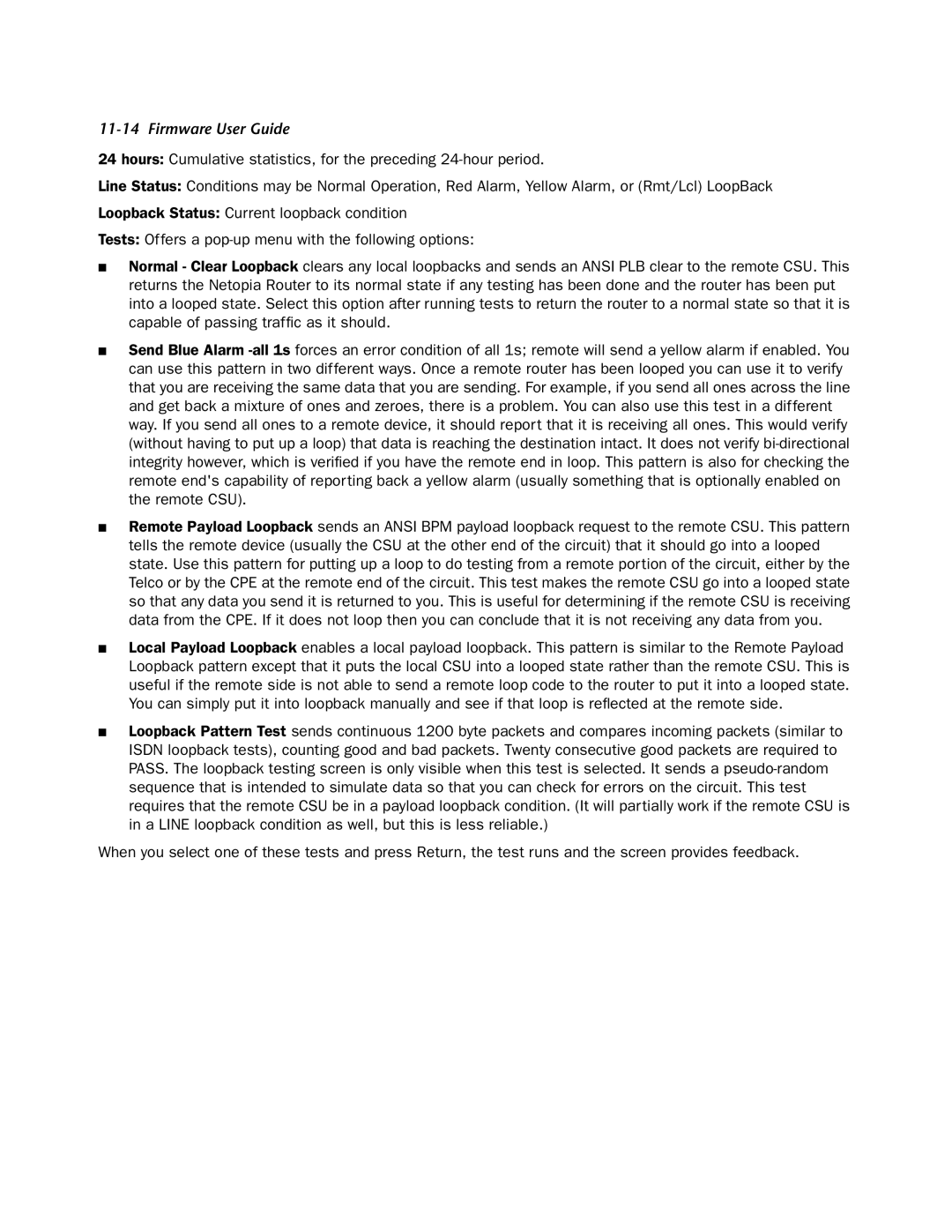11-14 Firmware User Guide
24 hours: Cumulative statistics, for the preceding
Line Status: Conditions may be Normal Operation, Red Alarm, Yellow Alarm, or (Rmt/Lcl) LoopBack
Loopback Status: Current loopback condition
Tests: Offers a
■Normal - Clear Loopback clears any local loopbacks and sends an ANSI PLB clear to the remote CSU. This returns the Netopia Router to its normal state if any testing has been done and the router has been put into a looped state. Select this option after running tests to return the router to a normal state so that it is capable of passing traffic as it should.
■Send Blue Alarm
■Remote Payload Loopback sends an ANSI BPM payload loopback request to the remote CSU. This pattern tells the remote device (usually the CSU at the other end of the circuit) that it should go into a looped state. Use this pattern for putting up a loop to do testing from a remote portion of the circuit, either by the Telco or by the CPE at the remote end of the circuit. This test makes the remote CSU go into a looped state so that any data you send it is returned to you. This is useful for determining if the remote CSU is receiving data from the CPE. If it does not loop then you can conclude that it is not receiving any data from you.
■Local Payload Loopback enables a local payload loopback. This pattern is similar to the Remote Payload Loopback pattern except that it puts the local CSU into a looped state rather than the remote CSU. This is useful if the remote side is not able to send a remote loop code to the router to put it into a looped state. You can simply put it into loopback manually and see if that loop is reflected at the remote side.
■Loopback Pattern Test sends continuous 1200 byte packets and compares incoming packets (similar to ISDN loopback tests), counting good and bad packets. Twenty consecutive good packets are required to PASS. The loopback testing screen is only visible when this test is selected. It sends a
When you select one of these tests and press Return, the test runs and the screen provides feedback.
